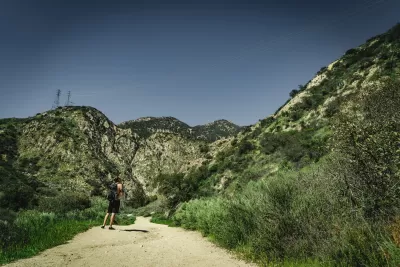Learn more about the Park Equity Alliance and how it is working to ensure equitable access to parks and recreation in L.A. County.

The Park Equity Alliance (PEA) was founded in 2017 with a mission to increase access to green and open spaces in the most impacted communities of color in Los Angeles County through a policy- and systems-change advocacy approach. Over the years, the Alliance has grown its base of member organizations and successfully rallied over 300 representatives from communities in high-need areas.
In this recently released report, the PEA discusses its history and mission, current work and wins, challenges, and public policy priorities. For example, members of the PEA were actively involved in and helped to shape the development of Los Angeles County's 2016 and 2022 Parks Needs Assessments as well as the implementation of Measure A, the countywide parks funding measure that was approved by voters in 2016.
Highlighted in the report are two issues that members of the PEA have prioritized:
- Budget Advocacy to Repair Historical Park Disinvestment: This involves advocating for additional funding to upgrade parks in high-need areas, including investing in maintenance, facility improvement, and recreational and educational programming available.
- Transit to Trails Advocacy: This is to advocate for funding and projects that increase transit access to parks, trails, and green spaces such as those in San Gabriel Mountains.
For more information, please read the report.
FULL STORY: United for Park Equity: Movement Building, Community Investments, and Systems Change

Alabama: Trump Terminates Settlements for Black Communities Harmed By Raw Sewage
Trump deemed the landmark civil rights agreement “illegal DEI and environmental justice policy.”

Planetizen Federal Action Tracker
A weekly monitor of how Trump’s orders and actions are impacting planners and planning in America.

The 120 Year Old Tiny Home Villages That Sheltered San Francisco’s Earthquake Refugees
More than a century ago, San Francisco mobilized to house thousands of residents displaced by the 1906 earthquake. Could their strategy offer a model for the present?

In Both Crashes and Crime, Public Transportation is Far Safer than Driving
Contrary to popular assumptions, public transportation has far lower crash and crime rates than automobile travel. For safer communities, improve and encourage transit travel.

Report: Zoning Reforms Should Complement Nashville’s Ambitious Transit Plan
Without reform, restrictive zoning codes will limit the impact of the city’s planned transit expansion and could exclude some of the residents who depend on transit the most.

Judge Orders Release of Frozen IRA, IIJA Funding
The decision is a victory for environmental groups who charged that freezing funds for critical infrastructure and disaster response programs caused “real and irreparable harm” to communities.
Urban Design for Planners 1: Software Tools
This six-course series explores essential urban design concepts using open source software and equips planners with the tools they need to participate fully in the urban design process.
Planning for Universal Design
Learn the tools for implementing Universal Design in planning regulations.
Clanton & Associates, Inc.
Jessamine County Fiscal Court
Institute for Housing and Urban Development Studies (IHS)
City of Grandview
Harvard GSD Executive Education
Toledo-Lucas County Plan Commissions
Salt Lake City
NYU Wagner Graduate School of Public Service





























